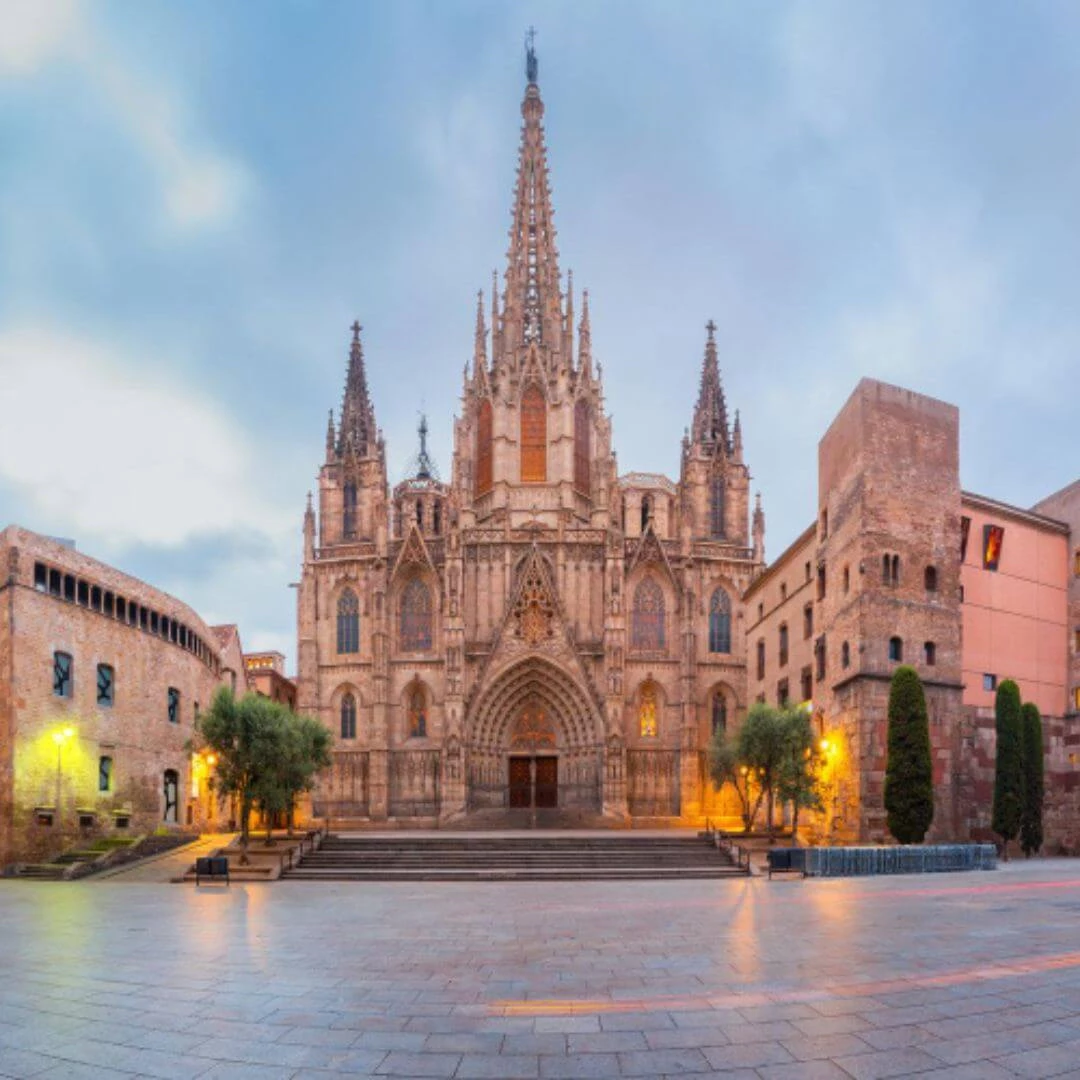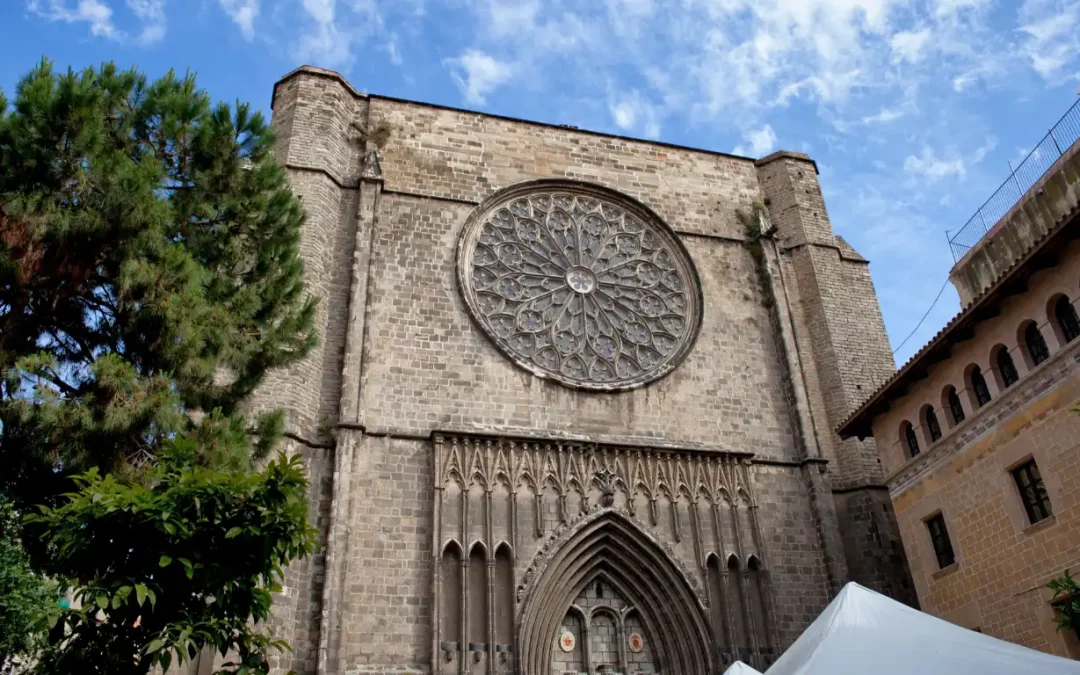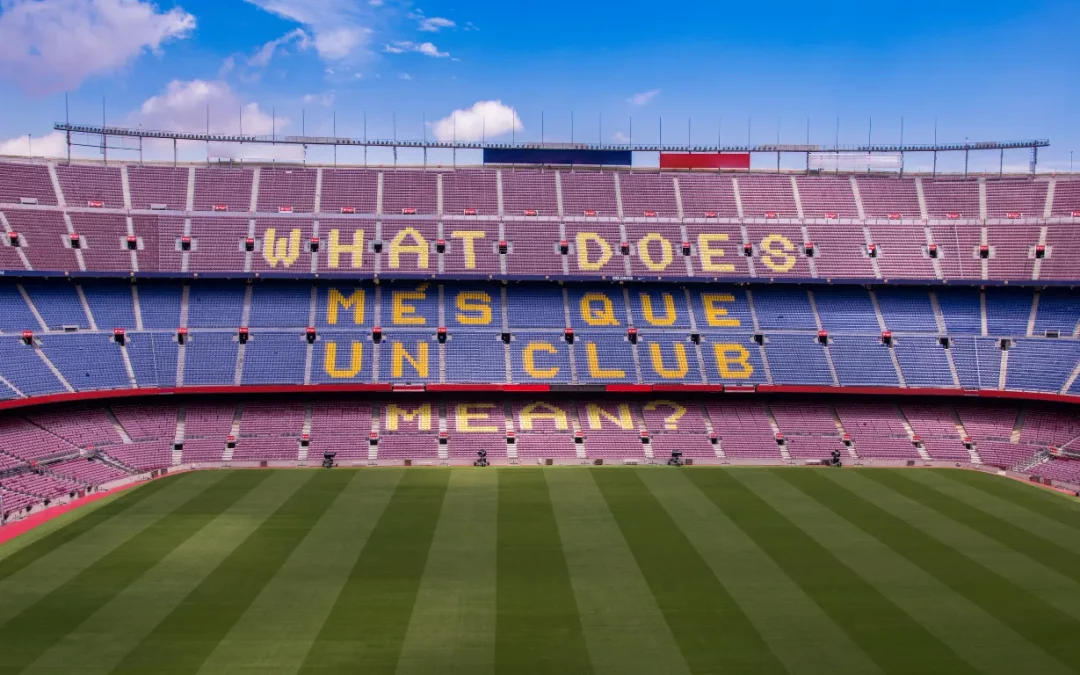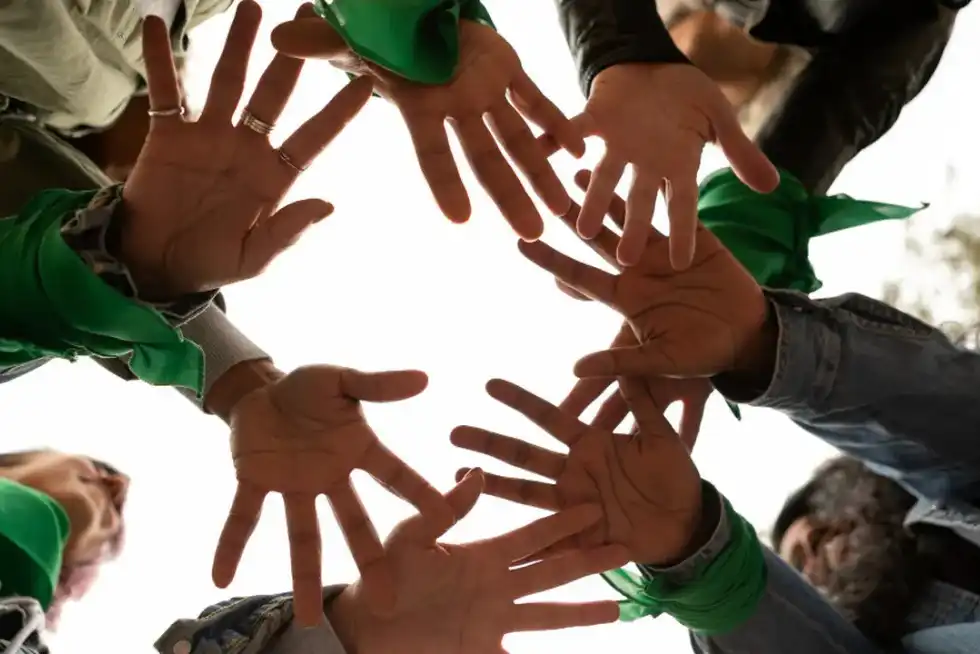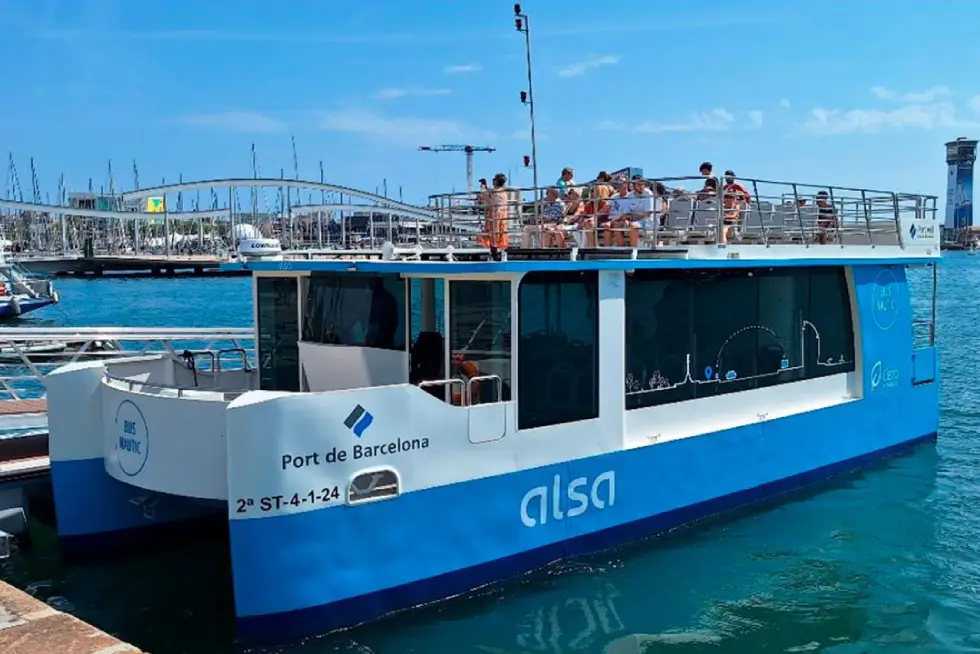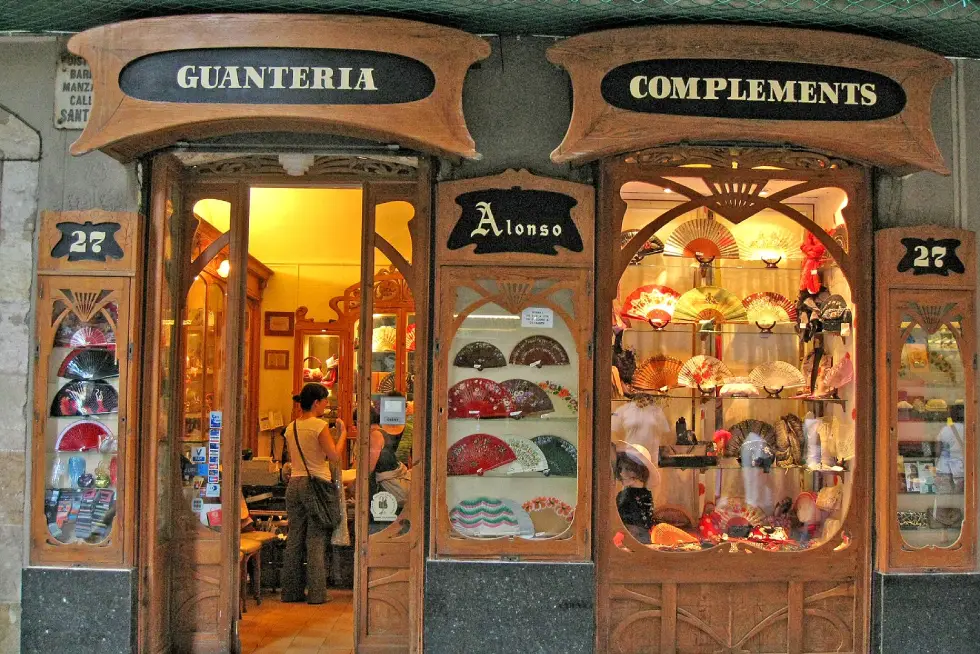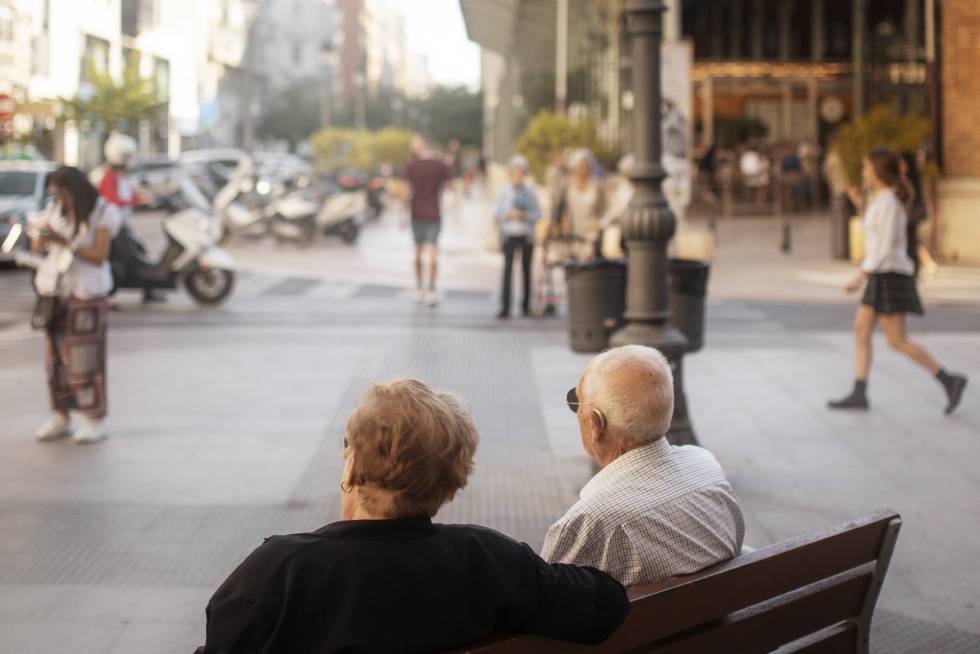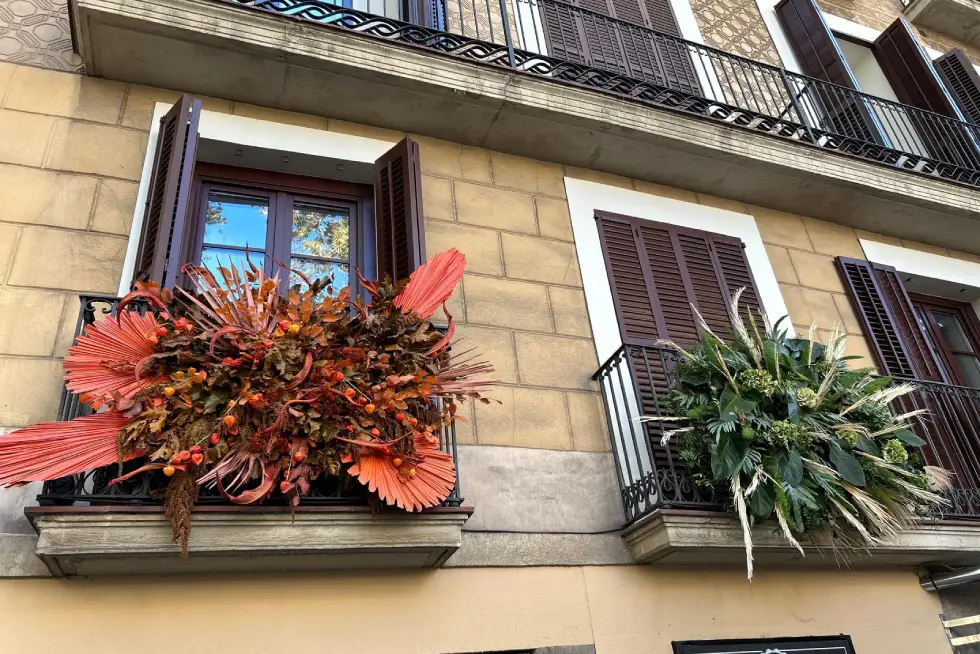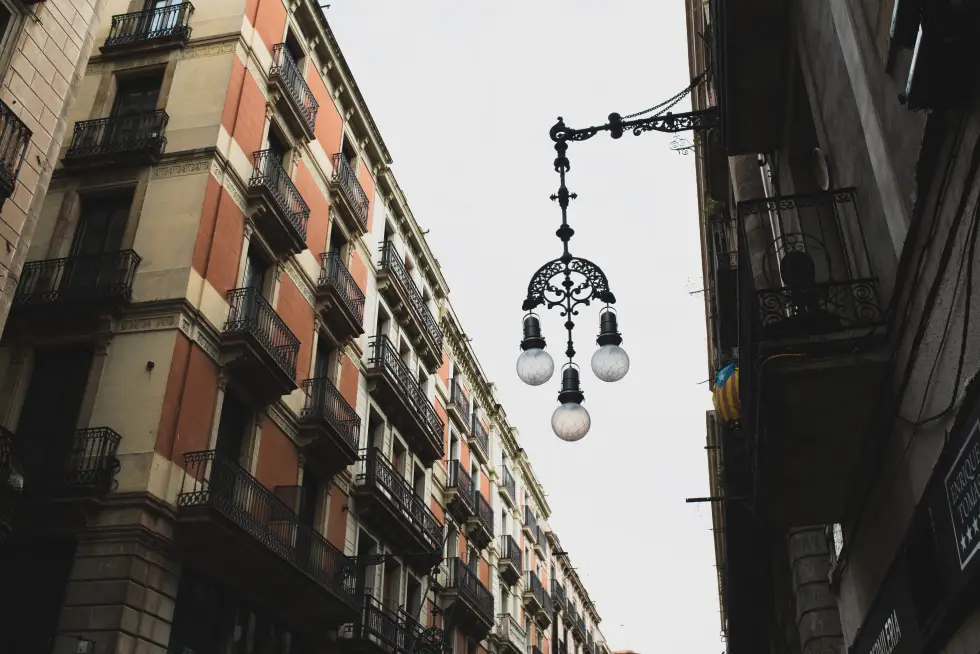We continue our review of the main neighbourhoods of Barcelona with a guide on what to do and what to see in the Gothic Quarter. Between its old buildings and narrow streets you will find the ruins of Barcino (the name of the city in Roman times) and you will be amazed by the main medieval buildings of the city. Are you in?
The main squares, buildings and monuments of the Gothic Quarter
Barcelona Cathedral
In the heart of the Gothic Quarter stands the imposing Cathedral of Barcelona, whose walls have witnessed eight centuries of the city’s history.
The current building was constructed between the 13th and 15th centuries where there used to be an old romanic cathedral, which was built over a church from the Visigothic period that preceded a paleochristian basilica, whose remains can still be seen in the basement of the Barcelona History Museum.
As well, at the end of the 19th century were finished the façade and the central neo-Gothic tower of the cathedral, which hides almost as many curiosities as stones. Among them are the nearly 200 gargoyles that watch from the heights, its 21 which have women’s names or the 13 geese that live in the cloister, which recall the thirteen martyrs that Santa Eulàlia (the martyr that gives the temple its name) had to suffer for refusing to renounce her Christian faith.
Frederic Marés Museum

Very close to the Cathedral you will find the Museu Frederic Marés, which houses a large collection of Hispanic sculpture from ancient times to the 19th century (with a large number of religious sculptures), as well as a large number of everyday objects from the 19th century such as pipes, hand fans, watches, jewellery and photographs.
The museum occupies part of the old Palace of the Counts of Barcelona, of which it preserves its main door at the entrance, the side walls, and the courtyard surrounded by orange trees.
Plaça de San Felipe Neri
Another of Barcelona’s gems that is little known by tourists. Built over an old medieval cemetery, this small and charming square is surrounded by Renaissance buildings, the old houses of the guilds of boilermakers and shoemakers (today the Footwear Museum) and the Church of Sant Felipe Neri, whose façade still bears the scars caused by a bomb dropped on Barcelona during the Spanish Civil War and caused the death of 42 people, most of them children.
Portal de l’Àngel
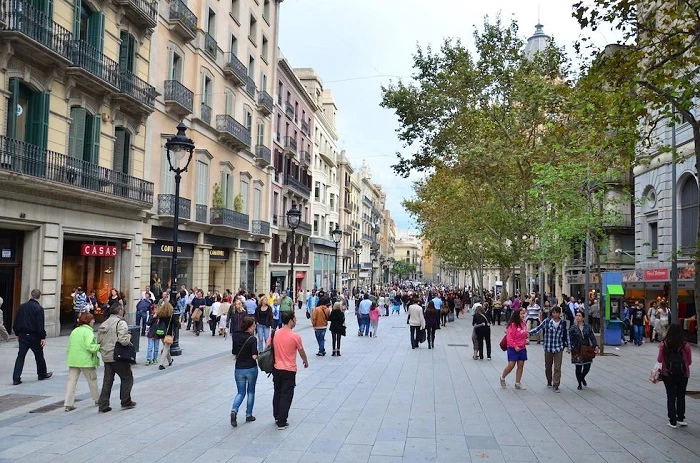
Known for being one of the fashion hotspots in Barcelona, in this pleasant pedestrianised street you will find shops from practically all the major brands, as well as shoe shops, accessory shops and El Corte Inglés (a Spanish version of Harrod’s, Galeries LaFayette or Macy’s).
Its ideal location (next to Plaça Catalunya and the magnificent Cathedral of Barcelona, connecting with the Gothic Quarter) and the large number of visitors that it receives have made Portal de l’Àngel one of the 20 most expensive streets in the world in which to open a shop.
Also, as a curiosity you can admire Cottet’s giant thermometer, 22 metres long and weighing two tonnes, which has been setting Barcelona’s temperature for over 50 years.
Plaça de Sant Jaume
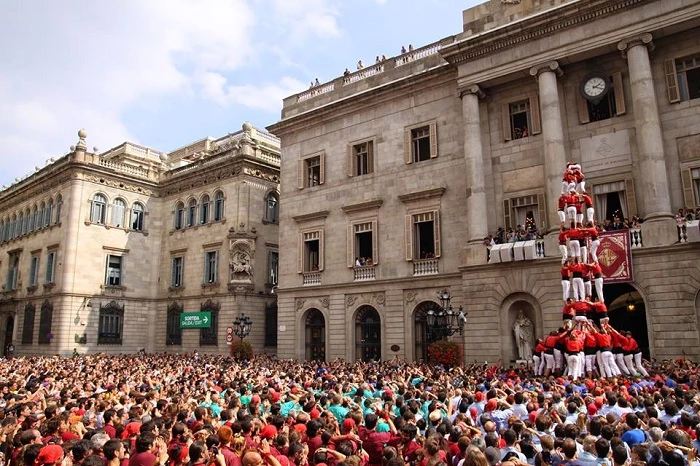
Plaça de Sant Jaume has been the political heart of Barcelona since the early days of the city (it was the Forum of the Roman Barcino and the public and political centre during the Middle Ages).
It currently houses two of the most important buildings in Barcelona and Catalan political life: the Barcelona City Council and the Palau de la Generalitat, the headquarters of the Catalan government.
During the festivities of La Mercé the square hosts a contest of castells, impressive human towers in the shape of a castle up to ten storeys high.
The columns of the Temple of Augustus
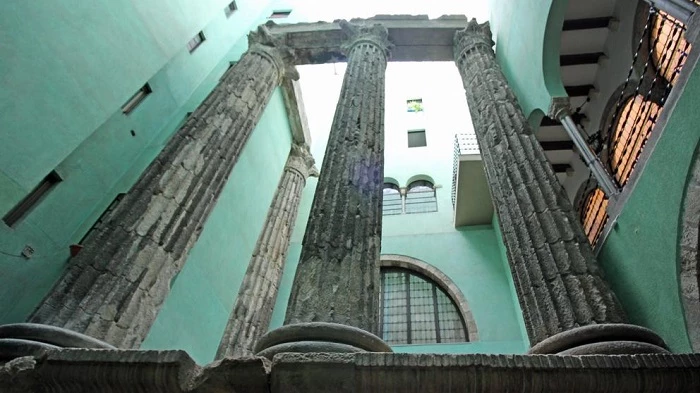
Almost hidden inside the building of the Centre Excursionista de Barcelona (in the street Paradís, adjacent to the Plaça de Sant Jaume) you will find one of the best kept secrets of Barcelona, the four columns of the Temple of Augustus.
Although initially they were related to the cult of the mythological hero Hercules, it was later clarified that the four columns belonged to the temple that was erected in Barcino in honor of Emperor Augustus during the first century BC.
Plaça del Pi
It is said that the origin of the Plaça del Pi lies in the discovery by a sailor of an image of the Virgin Mary on top of a pine tree (pi in Catalan), which was located in the 15th century inside what is now the beautiful Gothic church of Santa Maria del Pi.
After admiring the beauty of the church (its stone wall crowned by a huge rosette window and its majestic portico stand out), in the surroundings of Plaça del Pi you will find a multitude of bars and cafés where you can have a drink in the middle of a beautiful area.
In addition, every month the so-called Honey Market is held, famous for the cheeses and homemade sweets brought to the city by Catalan producers.
Plaça del Rei

The monumental complex of Barcelona’s Plaça del Rei is probably the Gothic corner that best exemplifies the city’s medieval past.
The square is dominated by the Palau Reial Major, an impressive building built in the 9th century and which was the residence of the Catalan counts between the 13th and 15th centuries. Its most emblematic hall is the Tinell Hall (organized in a succession of semicircular arches of great architectural value), where the Catholic Monarchs received Christopher Columbus on his return from America.
Built on the ancient Roman wall is the 14th century royal chapel of Santa Àgata, inside which you will find the valuable altarpiece of the Constable by Jaume Huguet.
The square also houses other treasures such as the Palau del Lloctintent (which has a beautiful Renaissance courtyard and is currently the headquarters of the Arxiu de la Corona d’Aragó) and the former Casa Clariana-Padellàs, home of the Museu d’Història de Barcelona, where you can admire the archaeological remains of Roman Barcelona.
So far our review of things you can see and do in the Gothic Quarter. If you still have some energy left, you can continue your visit to the neighbourhoods of Sant Pere, Santa Caterina and La Ribera before returning to the hotel. We’ll be waiting for you!


